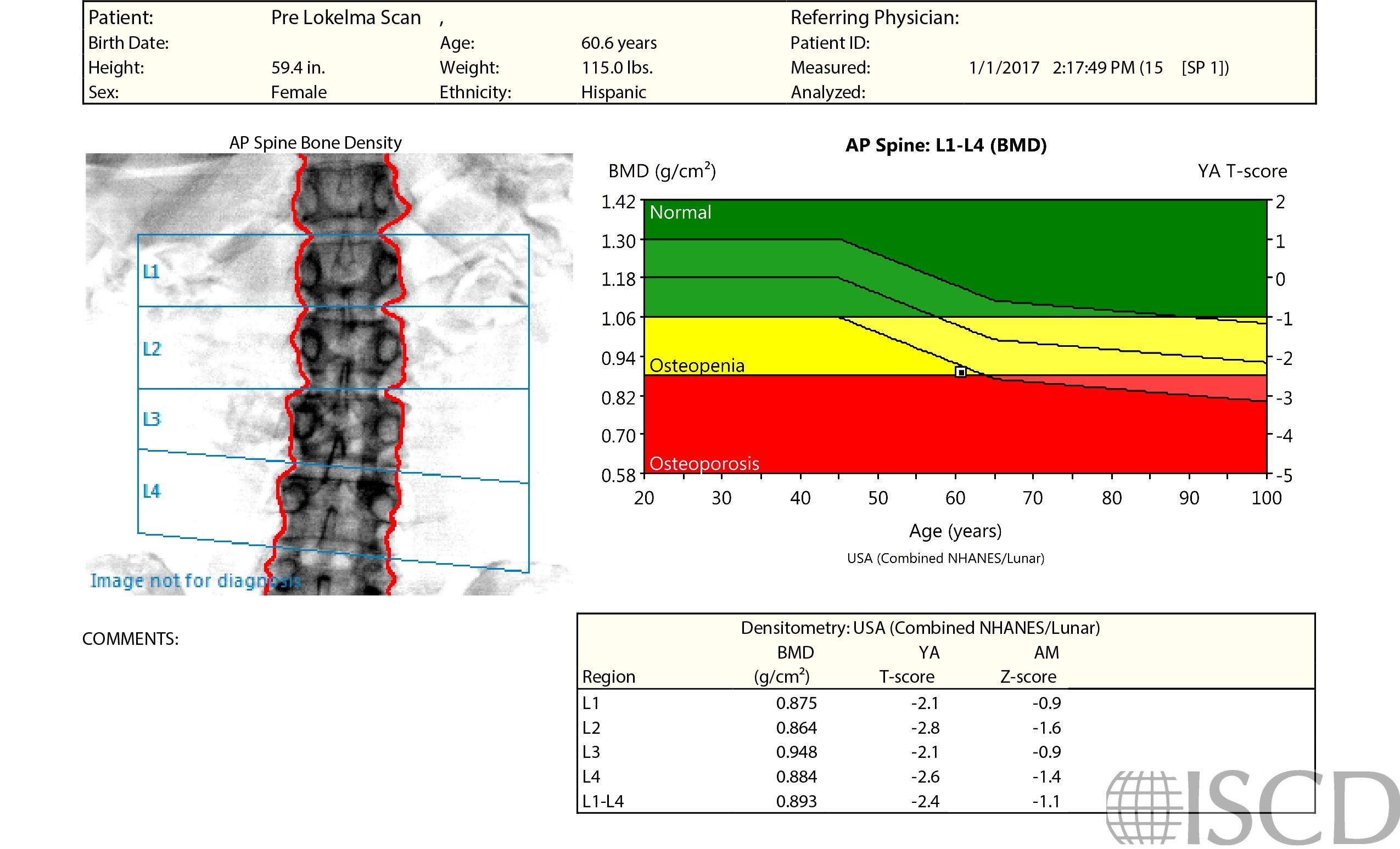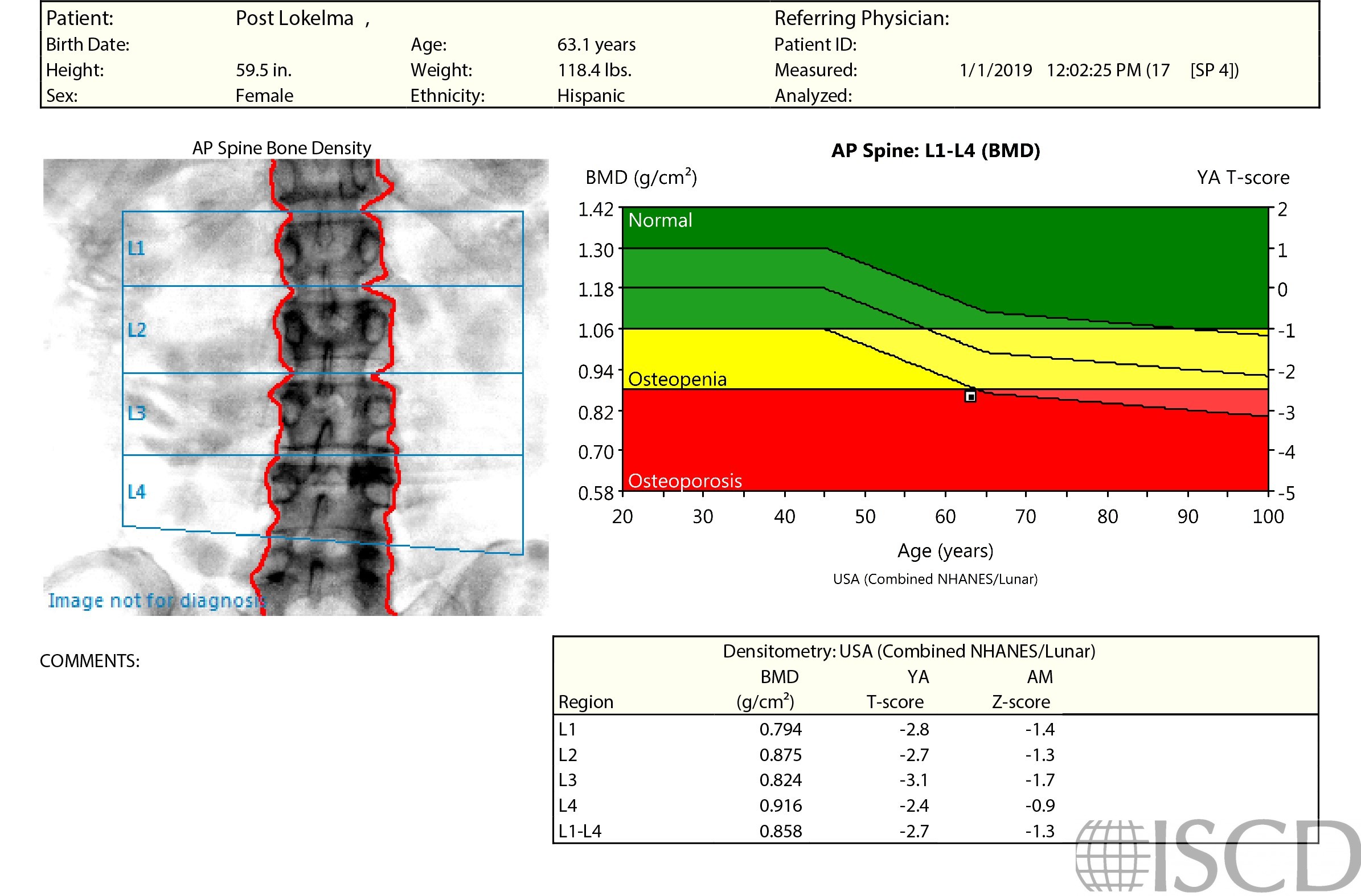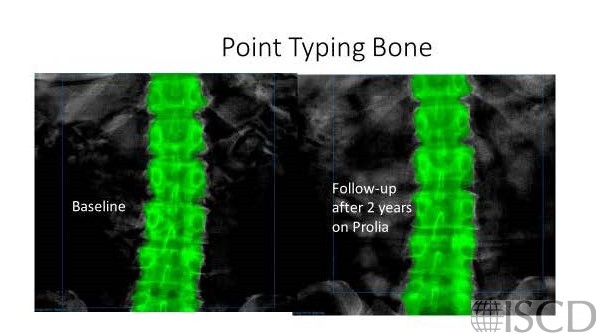Sodium Zirconium Cyclosilicate (Lokelma) Artifact
The scan on the left is baseline and on the right is after 2 years of Prolia. Total hip BMD was stable, but there was increased grey color on the followup scan. The patient had started sodium zirconium cyclosilicate in the interim for hyperkalemia.. The medication takes 3 days to clear and patients can generally not stop the medication


The point bone typing appears similar

There is also little difference between the tissue point typing views.

This is a patient with a baseline and follow-up scan after 2 years of Prolia. There was a visual difference between the scans, with increased and diffuse gray color on the followup spine scan. The total femur was stable at 0.639 g/sq cm at baseline and 0.631 g/sq cm at follow-up. History and further patient interview revealed that Lokelma was started between scans. Lokelma is sodium zirconium cyclosilicate and is used to treat hyperkalemia. It attracts potassium for excretion to prevent absorption. The Lokelma would affect the soft tissue baseline and thereby affect measured bone mineral density. A medication history can be very useful in evaluation of DXA scans and it is important to evaluate the images for differences between scans..
Diane Krueger, BS, CCRC, CBDT, University of Wisconsin Osteoporosis Clinical Research Program
• McCarney, B., N. Binkley, and D. Krueger, A Newly Recognized DXA Confounder: The Potassium-Binding Medication Sodium Zirconium Cyclosilicate. J Clin Densitom, 2020.